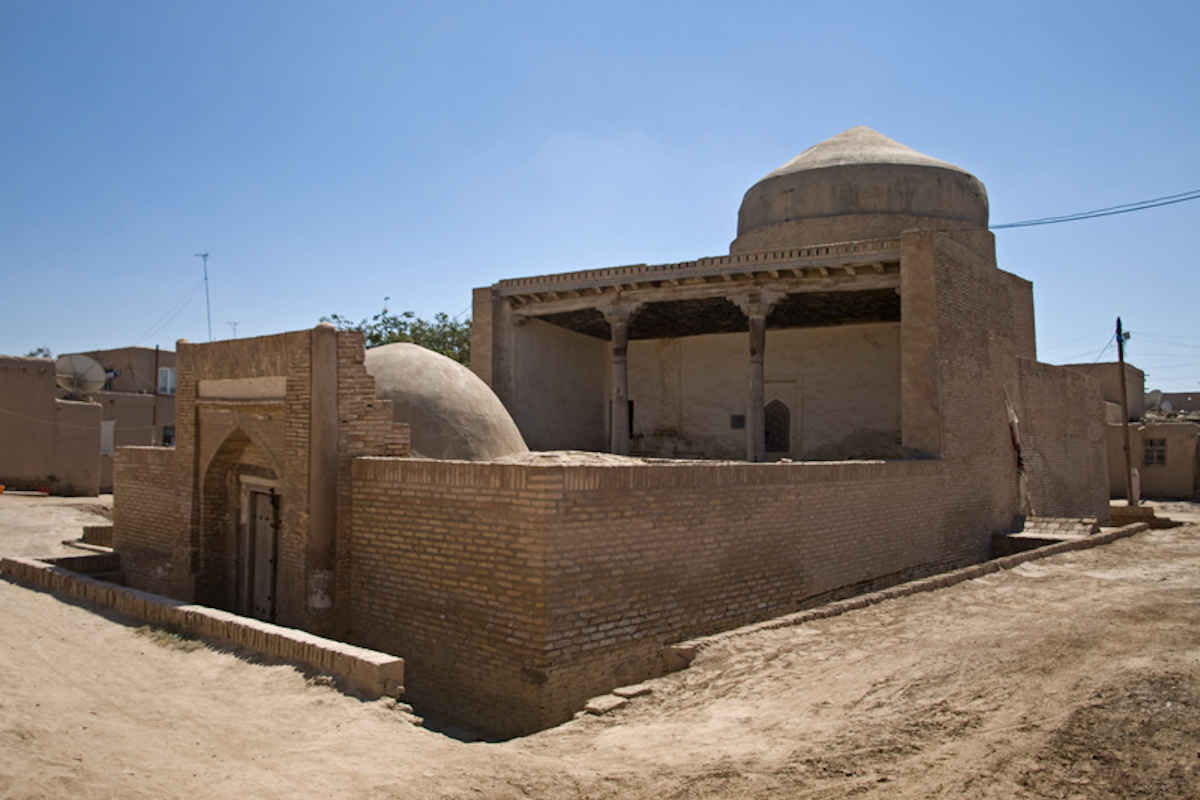Khiva - Bogbonli Mosque

The Bogbonli Mosque in Khiva: a masterpiece of Islamic architecture
In the medieval Muslim world, the importance of a city was closely linked to its main mosque, the so-called Friday mosque. These jom’e mosques served not only as religious centres, but also as symbols of power, prosperity and cultural prosperity. The city fathers competed to build monumental and ornate places of worship that emphasised their cities and gave them prestige.
The Bogbonli Mosque is located in the south-eastern part of Ichan-Qala, the inner fortified city of Khiva, and is a remarkable example of the traditional Islamic architecture of Central Asia. According to an inscription in verse on a stone slab at the entrance, the mosque was built in 1809 (1224 after the Hijrah). The name of the master builder Pahlavan-Kuly, who was responsible for the architectural planning of the building, is noted in the same inscription. The ornately carved door of the mosque bears the name of another master woodcarver – Ruz Muhammad, son of Adin Muhammad. This highly esteemed craftsman was also responsible for the ornate door of the ziyarat khana of the Sheikh Mukhtar Vali mausoleum in the village of Astana in the Yangiaryk district.
Legend has it that the Bogbonli Mosque was built with the fortune of two brothers who worked as gardeners. Their generosity made the construction of this important religious building possible, which has served as a place of prayer and spiritual contemplation ever since.
The mosque has a rectangular basic structure, which is complemented by an open aiwan with two artistically designed wooden pillars and a vaulted winter room. The carved wooden pillars of the aivan are particularly noteworthy and are an outstanding example of traditional Uzbek woodcarving. The intricate ornamentation of the columns bears stylistic similarities to the famous wooden columns of the Juma Mosque in Khiva, one of the most important historical mosques in Central Asia. These ornate decorations are not only decorative, but also reflect the centuries-old tradition of Islamic art, which has a long and highly developed history in the region.
The architectural design of the Bogbonli Mosque combines functional and symbolic elements. The open aiwan served as a shady place of prayer during the warmer months, while the vaulted interior offered protection from the harsh weather conditions of winter. This sophisticated combination of climatically adapted construction and artistic sophistication makes the Bogbonli Mosque a remarkable testimony to the architecture of the early 19th century in Khiva.
Today, the mosque is one of the city’s historically and culturally valuable buildings and attracts both worshippers and tourists who marvel at the impressive architecture and ornate wood carvings. The Bogbonli Mosque stands not only as a religious monument, but also as a living testimony to the Islamic building tradition and master craftsmanship of the region. It epitomises the rich cultural heritage of Khiva and remains an important part of the historical ensemble of Ichan-Qala.
